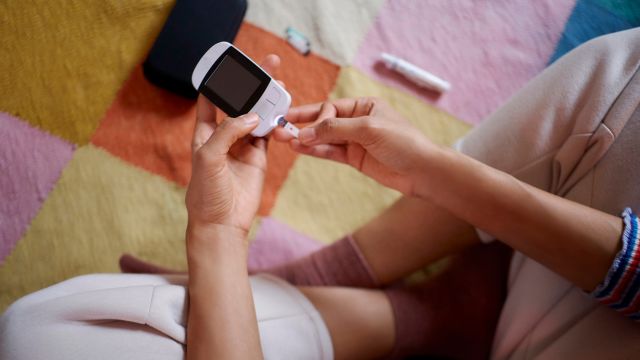Updated on April 2, 2024
Type 1 diabetes is an autoimmune disease where the body’s immune system attacks insulin-producing cells in an organ called the pancreas. Insulin is a hormone that the body needs to move glucose (a sugar that is the body’s primary source of energy) into cells. Without enough insulin, glucose levels build up in the blood. This is harmful to the body and can lead to serious complications.
Type 1 diabetes was formerly known as juvenile diabetes because it often begins during a person’s childhood or adolescence. However, the onset of the condition can happen at any age and there are many people who are diagnosed as adults.
The stages of type 1 diabetes
Type 1 diabetes develops in three stages:
Stage 1
- At this stage, there are no symptoms and no abnormalities on a blood glucose test. At least one type of diabetes-related autoantibody will be detected on a blood test called a diabetes autoantibody panel.
- Autoantibodies are substances made by the immune system that direct the immune system to attack healthy tissues when a person has an autoimmune disease like type 1 diabetes.
- A healthcare provider may order a blood test to check for antibodies if there is a reason to suspect a person may have early-stage type 1 diabetes—for example, if they have a close family member (such as a sibling) that has type 1 diabetes.
Stage 2
- There are also no symptoms at stage 2, but a blood glucose test will show abnormal blood glucose levels. This is the result of autoantibodies destroying insulin-producing cells in the pancreas, causing the body to produce less insulin.
- Two or more diabetes-related autoantibodies will be detected with a diabetes autoantibody panel.
Stage 3
- At this stage, autoantibodies have destroyed significant numbers of insulin producing cells and the body is no longer producing enough insulin.
- A person at stage 3 is usually experiencing symptoms. These can appear quickly and include unusual thirst and hunger, frequent urination (and possibly bed-wetting in toilet-trained children), unintended weight loss, irritability, fatigue, and breath that smells fruity.
- At this stage, a person with type 1 diabetes will require insulin therapy. This involves taking doses of insulin to replace the insulin that is not being made by the body. Insulin is delivered with an injection (from a syringe or an insulin pen) or with an insulin pump.
People with type 1 diabetes—and parents of children with type 1 diabetes—will also need to monitor blood glucose levels with a glucose meter or continuous glucose monitor, learn how different foods affect blood glucose levels, and know how to address adverse events like hypoglycemia. Hypoglycemia is an episode where blood sugar becomes too low. It is common among people who treat type 1 diabetes with insulin and needs to be avoided—severe episodes can be life-threatening.
Are there treatments for early-stage type 1 diabetes?
If a person is diagnosed in an early, pre-symptomatic stage of type 1 diabetes, a healthcare provider may recommend a medication to delay diabetes from progressing into stage 3, which may delay the need for insulin therapy.
This type of treatment is known as a disease-modifying therapy. The first disease-modifying therapy for stage 2 type 1 diabetes became available in 2022. This treatment is approved for children as young as 8 years old, as well as teens and adults, and can delay the progression from stage 2 to stage 3 type 1 diabetes. Additional disease-modifying therapies are under development—and may be a topic to discuss with a healthcare provider.






